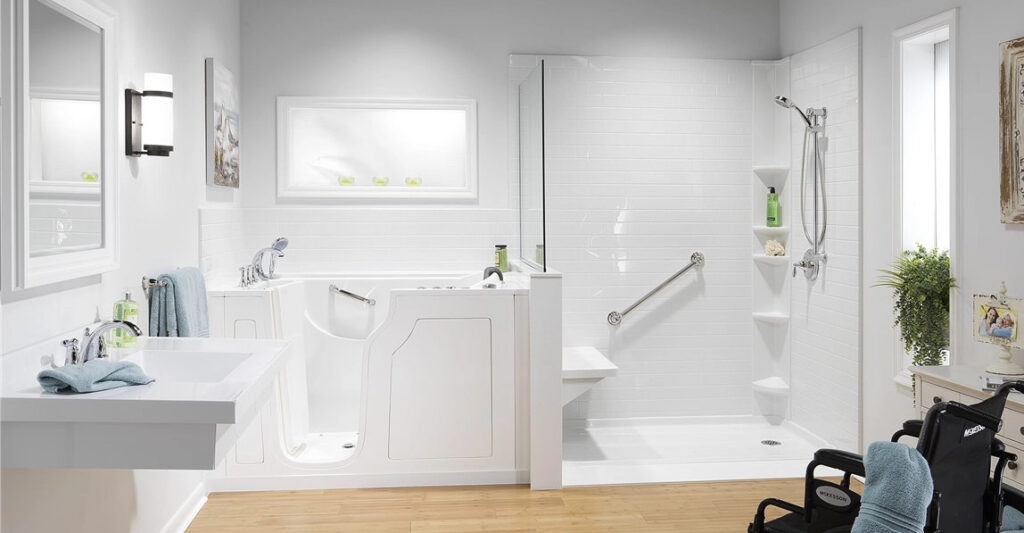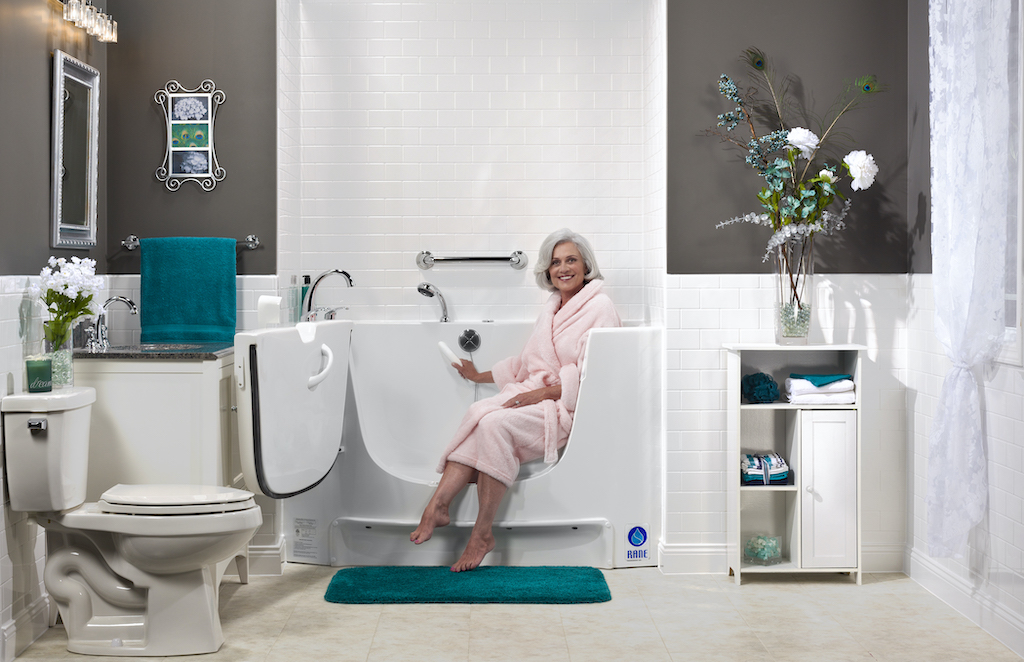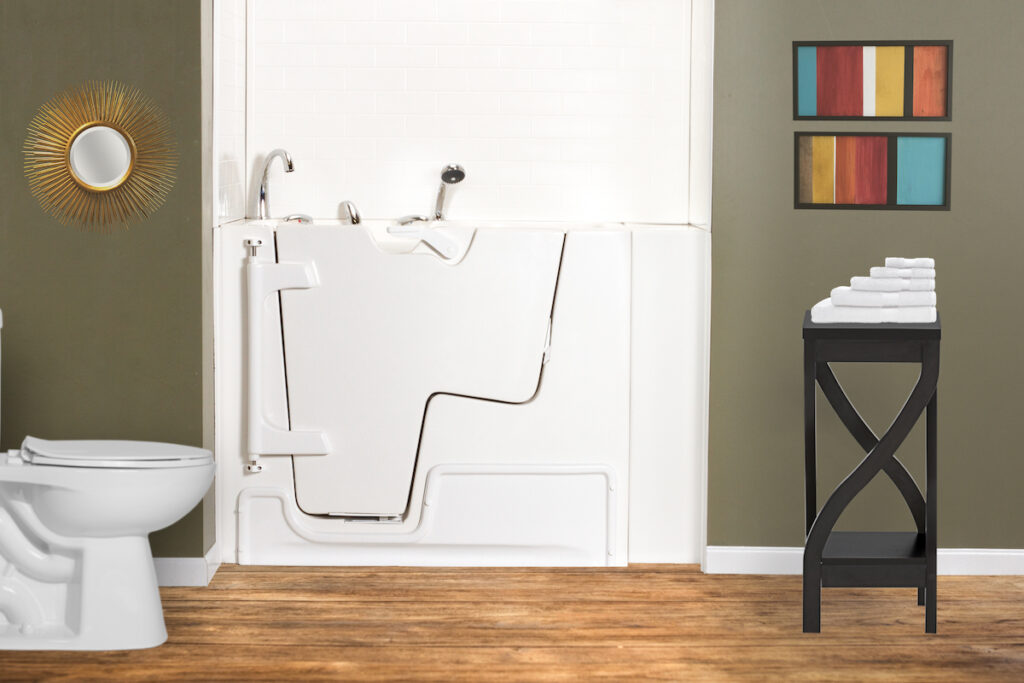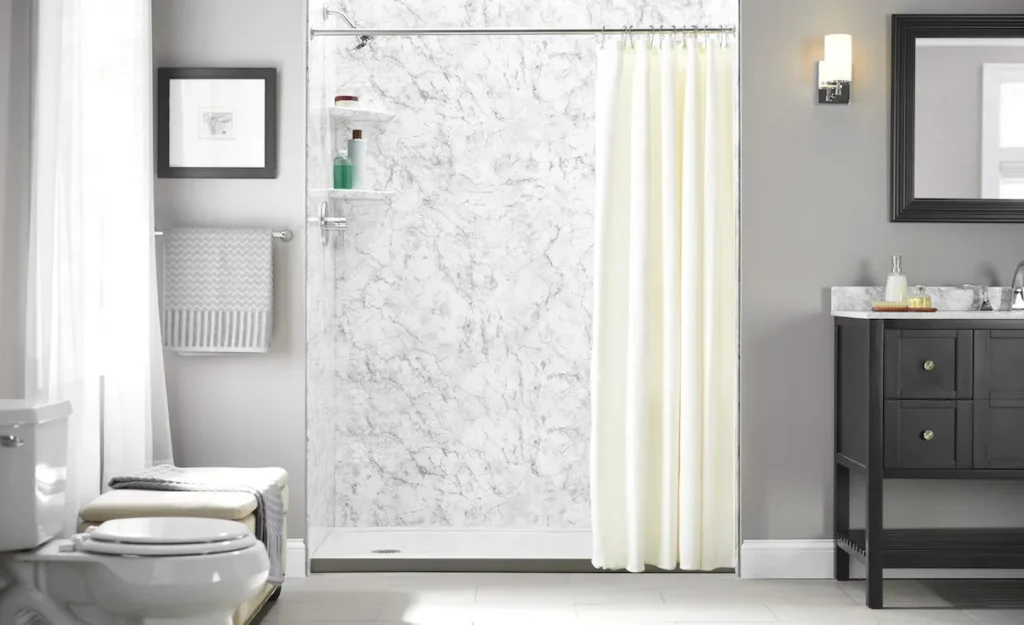Aging in Place: Choosing Between Walk-In Tubs and Standing Showers
For many older adults, there’s no place like home—literally. According to recent research from Empower, nearly 9 in 10 Americans over age 50 say they want to age in place rather than move into assisted living. This strong desire to remain in familiar surroundings reflects a growing trend toward maintaining independence, comfort, and control during retirement.
However, turning that desire into reality often requires thoughtful home modifications, especially in potentially hazardous areas like the bathroom. What once was a simple routine—stepping into a bathtub—can become risky when balance, mobility, or joint strength declines.
That’s where smart bathroom upgrades come in. Two of the most popular aging-in-place solutions are walk-in tubs and barrier-free (curbless) standing showers. Each offers unique benefits, and the right choice depends on your personal needs, preferences, and home layout.
Let’s compare the pros and cons of each option so you can make an informed decision:

Understanding Walk-In Tubs
What Sets Walk-In Tubs Apart?
Walk-in tubs revolutionize the bathing experience by eliminating the dangerous high step over traditional tub walls. These specialized bathtubs feature a watertight door that allows users to simply step through an opening, typically with only a few inches of threshold height. Once inside, bathers can sit comfortably on a built-in seat while the tub fills with water.
Many modern walk-in tubs offer luxury features that transform them into therapeutic wellness centers:
- Hydrotherapy jets that massage sore muscles
- Air jets that provide gentle bubble massage
- Heated seating and backrests for extra comfort
- Chromotherapy lighting for relaxation
- Rapid drain systems to minimize waiting time
Advantages of Choosing a Walk-In Tub
Enhanced Safety Features
The primary benefit of walk-in tubs is their safety-first design. With entrance thresholds as low as 2-3 inches, built-in seating at a comfortable height, and multiple grab bars, these tubs dramatically reduce fall risk during bathing. The seated position eliminates the need to lower yourself to a tub floor and struggle to rise again afterward. Choosing a walk-in tub for seniors who struggle with standing and balance can make aging in place more feasible when it comes to hygiene.
Therapeutic Health Benefits
For those managing chronic conditions like arthritis, fibromyalgia, or circulation issues, the hydrotherapy options in premium walk-in tubs provide meaningful relief. The combination of warm water immersion and targeted jet massage can:
- Reduce joint inflammation
- Improve circulation
- Relax tight muscles
- Promote better sleep
- Ease stress and anxiety
- Comfortable Soaking Experience
Unlike standard showers, walk-in tubs allow for deep water immersion while maintaining an upright, seated position. This provides the relaxation benefits of a bath without requiring the user to lie down, which can be difficult for many seniors to manage safely.
Potential Drawbacks to Consider for Walk-In Tubs
The Timing Dilemma
The most frequently cited disadvantage of walk-in tubs relates to the fill and drain cycle. Because the door must remain closed for watertight operation, users must:
- Enter the tub
- Close the door
- Wait while the tub fills (typically 7-12 minutes)
- Bathe
- Wait for complete drainage before exiting (typically 2-4 minutes)
During filling and draining, you may experience temperature discomfort. Premium models address this with fast-fill faucets, rapid drainage systems, and heated seating to minimize wait-time discomfort.
Installation Considerations
Walk-in tubs typically require more extensive installation work than standing showers. Considerations include:
- Weight capacity of your floor (filled tubs are heavy)
- Electrical requirements for jet systems
- Hot water tank capacity for deep tubs
- Door swing clearance in smaller bathrooms
Budget Impact
Quality walk-in tubs represent a significant investment, with prices typically ranging from $5,000 to $15,000+ including installation. However, when weighed against the potential cost of falls or assisted living, many families find this investment worthwhile for the safety and independence it provides.
Understanding Walk-In Standing Showers
Today’s accessible standing showers bear little resemblance to the basic stalls of decades past. Modern barrier-free designs feature zero-threshold entries, making them completely level with the bathroom floor for seamless access – even with mobility aids like walkers or wheelchairs.
These showers typically include:
- Curbless entries with subtle floor slopes for drainage
- Grab bars strategically placed for stability
- Handheld shower wands with adjustable heights
- Optional built-in or fold-down seating
- Non-slip flooring materials
- Designer tile and glass options that maintain a stylish appearance
Advantages of Barrier-Free Showers
Universal Accessibility
The curbless design of barrier-free showers offers the most straightforward access of any bathing option. Without even a minimal threshold to navigate, these showers work exceptionally well for:
- Wheelchair users
- Those who use walkers or rollators
- People who may transition to mobility aids in the future
- Caregivers who assist with bathing
Space Optimization
Standing showers typically require less square footage than walk-in tubs, making them ideal for smaller bathrooms. Their open design can also create the perception of more space, contributing to a less cramped feeling in compact bathrooms.
Quick and Efficient Bathing
For those who prefer efficient bathing routines, showers require less time and use less water than filling a tub. This efficiency extends to both the bathing process itself and the entire preparation and cleanup routine.
Design Versatility
Modern barrier-free showers offer tremendous design flexibility, from sleek minimalist glass enclosures to spa-inspired tile retreats. Costs for a walk-in showers vary since there are so many features and options to choose from. They integrate seamlessly with contemporary bathroom aesthetics while maintaining full accessibility.
Potential Limitations for Standing Showers
Standing Requirements
Though barrier-free showers can incorporate seating, the showering experience typically involves some standing or transferring between positions. For individuals with significant mobility challenges, this may present difficulties even with grab bars and seats.
Less Therapeutic Benefit
While refreshing, showers don’t provide the same immersive therapeutic experience as soaking in a tub with hydrotherapy jets. For those seeking relief from chronic pain conditions, a walk-in tub may offer more comprehensive relief. If you are set on a shower, you might consider a hydrotherapy shower.
Water Containment Challenges
Barrier-free designs, by nature, have fewer structures to contain water spray. Careful design with proper floor slopes, adequate drainage, and strategic shower head placement is essential to prevent bathroom flooding.
Making the Right Decision for Your Home
Assess Your Current and Future Needs
The most important factor in choosing between these options is honestly evaluating both current and anticipated mobility needs. If you can comfortably stand for several minutes now without fatigue or discomfort, a barrier-free shower might suit you well. But consider how that ability could shift in the next 5 to 10 years. Mobility often declines with age, and a solution that works today may not be safe or practical tomorrow.
If you struggle with balance, even with grab bars or non-slip floors, a walk-in tub with built-in seating may offer greater stability and safety. Mobility aids are another key consideration. If you use—or expect to use—a walker or wheelchair, a curbless shower typically offers easier, more accessible entry.
For those who rely on a caregiver during bathing, an open shower design is usually more practical than a walk-in tub, which can limit maneuverability.However, if you experience chronic pain, arthritis, or similar conditions, a walk-in tub with hydrotherapy jets may provide therapeutic relief in addition to safety.
What You Need to Know About Your Bathroom Space
Not every bathroom can easily fit a walk-in tub or a barrier-free shower—but that doesn’t mean you don’t have good options. Here’s how to know what will work:
- If you have limited open space, a walk-in shower usually fits better because it takes up less room.
- If your doors might bump into a tub or shower, a shower with sliding doors or a curtain can solve the problem.
- If your faucet and drain are in one spot now, it’s usually easier and more affordable to install your new tub or shower in the same place.
- If you want to add grab bars for safety, your walls may need to be reinforced—but this can be done easily during installation.
- If you’re considering a walk-in tub, your floor will likely need to support more weight. Most floors in modern homes can handle it, but an installer can double-check to be safe.
The good news? A professional installer can help you figure all this out, so you don’t have to measure or guess on your own.
Consider Your Lifestyle Preferences
Beyond safety and accessibility, personal preference plays an important role:
- Do you find baths relaxing and therapeutic?
- Do you prefer quick, efficient showers?
- How important are luxury features like hydrotherapy?
- What aesthetic style appeals to you?
Budget Realistically
While both options represent significant investments, they differ in typical price ranges:
Walk-in tubs: $4,000-$22,000+ installed, depending on features Barrier-free showers: $3,000-$10,000+ installed, depending on materials and customization
Remember to inquire about:
- Financing options
- Medicare/Medicaid coverage possibilities
- Home modification grants for seniors
- Tax deductible as medical expenses
Working With Your Contractor – Questions to Ask
The expertise of your bathroom remodeling contractor plays a crucial role in the success of your project. When interviewing potential contractors, ask:
Find Out About Their Experience with Safety and Accessibility
- How many accessible bathrooms have they installed?
- Do they have specific training in universal design or ADA compliance?
- Can they provide references from senior clients?
Ask About Product Options Best Suited to Your Needs
- What brands do they recommend and why?
- What warranty coverage comes with products and labor?
- What accessibility features can be incorporated?
What Are the Installation Details
- Will structural modifications be needed?
- How long will the project take?
- What plumbing or electrical upgrades might be required?
Walk-in Tubs vs Standing Showers: We Can Help You Decide
Now that you know more about the benefits of walk-in tubs vs standing showers, you can make the best possible decision for your home. As you consider your options, it’s most important to think about the following:
- How long you plan to stay in your home
- Your level of mobility now and what you expect it to be in the future
- The needs of the different family members living in your home
- The layout of your bathroom and how much space you have
- Standing showers are easy to clean
Remember that the best solution varies for each individual – there’s no universal “right answer” that works for everyone. By working with knowledgeable professionals and honestly assessing your situation, you can create a bathroom that balances safety, comfort, and style as you enjoy the benefits of aging in your own home.
If you need help making your final decision, Atlas Home Improvement is here to help! Our team of experts would be happy to answer any questions you may have, help you weigh the benefits of each option, and show you different models that are available. Contact us today to learn more or request a free quote.



















